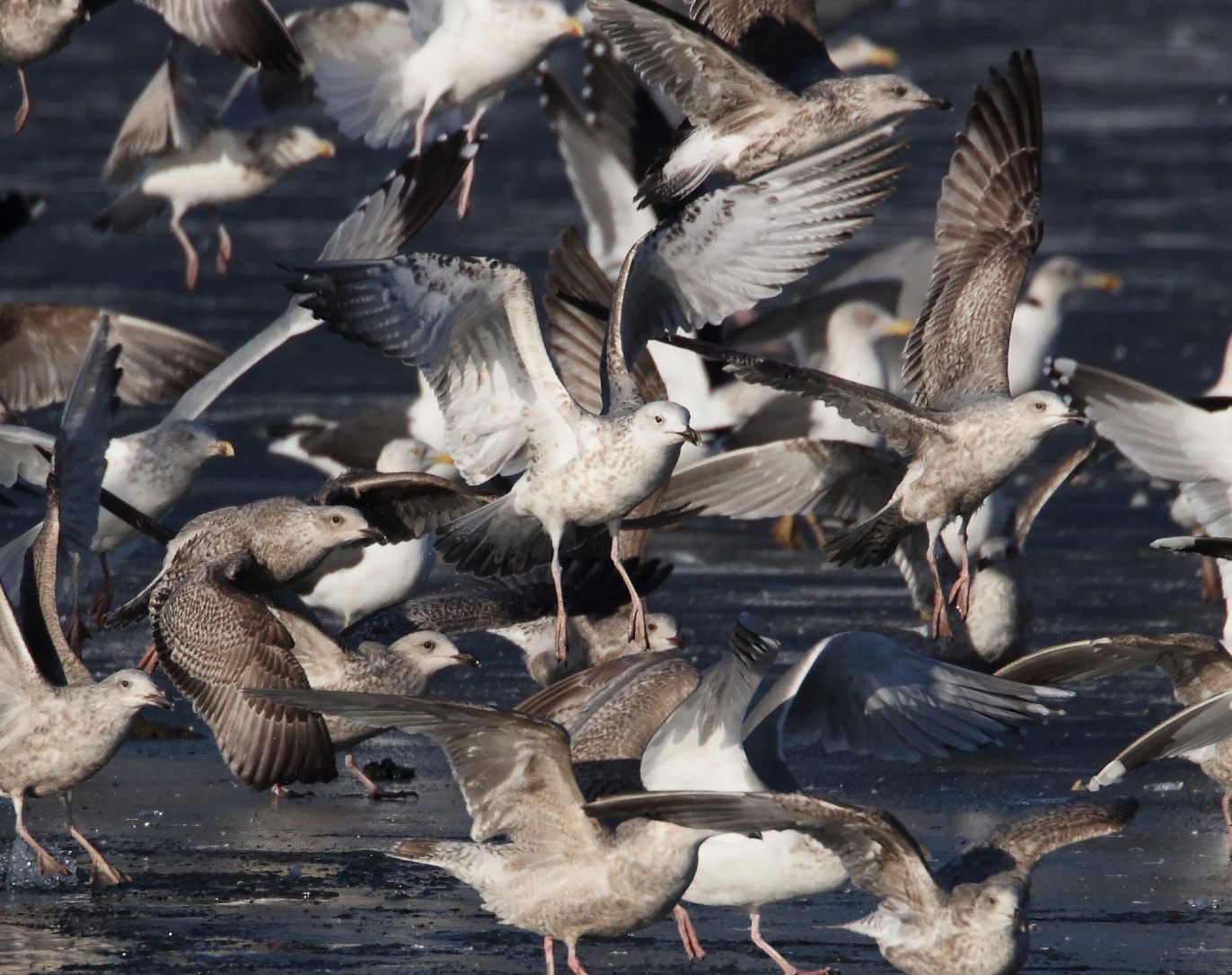It's midwinter and for one subset of birders that can only mean one thing – gulls. They are the marmite of the birding world, and I confess from the outset that I'm a larid lover. I can hear the groans from those who wouldn't normally lift their bins to a gull unless their mother's life depended on it, but hear me out when I say that these are the best of birds.
Like most birders I aspire to finding rarities, but I'll happily admit that 10 g of feathers skulking in a bush that offers a millimetre of view every two hours leaves me a little cold, as does any bird that requires thermal-imaging technology to secure a record shot that looks like something akin to an out-of-focus advert for Ready Brek. Give me a big, bruising wing-stretching argentatus European Herring Gull any day – subtle shades of grey for a grey northern winter.
Complex ageing, moult and individual personality combine to offer a brilliant birding challenge when it comes to identifying gulls. Differences between species can be subtle – throw in the spectre of hybridisation in some species (such as Caspian and European Herring Gulls) and some individuals can defy even the most learned of laridophiles. But at least they come to bread – not something you hear said too often about Acrocephalus warblers.
Beyond European Robins and Mallards, there are few other species you can get close enough to actually hand feed, but wave a decent chunk of Mother's Pride in the air out of your car window at any coastal car park and chances are that the local gulls will have it before you can say 'stone-baked'. Don't worry about your fingers, you'll manage just fine with eight or nine.

Picking out a Caspian Gull (centre) from a throng of large gulls is one of our columnist's favourite midwinter activities (Jim Almond).
Winter staple
When all the autumn Yellow-browed Warblers and Little Buntings have gone south to spend the winter at their plush Cornish second homes, many gulls remain loyal to the north. Wherever you're birding there's sure to be some gulls to scan through in search of something special. Even the commonest of species can create a winter spectacle – get yourself along to a reservoir roost on a late afternoon, where thousands of Black-headed or Common Gulls may arrive to spend the night, and enjoy trying to find the single Mediterranean Gull in the melee.
Stuck in an urban office? Look out the window and I guarantee you'll manage some gull fly-overs. Many species make long daily movements to feed and roost, so it's perfectly possible to pick up oddities as they fly over. Sure, they may not be screaming rarities that will bring out the crowds, but picking out a fly-over Med Gull among the long lines of late afternoon larids heading to roost can offer the same sense of satisfaction if the context is your garden, office or other landlocked viewpoint.
Spending an afternoon watching your local landfill and the surrounding area, complete with the associated vistas and aromas, may not be everyone's cuppa, but the winter months offer the opportunity of white-winged visitors from the far north, with both Iceland and Glaucous Gulls a frequent feature of fetid tips. Wrap up warm, hold your nose and take a deep dive into your local dump – you may be surprised by what you turn up!
- This column first appeared in the January 2024 edition of Birdwatch. To be the first to read the magazine each month, take out a subscription to Birdwatch or Bird News Ultimate.

